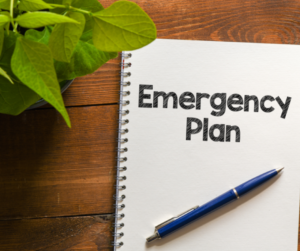
Whether a tornado strikes or a flood invades your community, your organization needs to be ready for the worst. Members of your congregation could be at your facility when a crisis occurs, and you’ll need to know how to evacuate the building or how to endure if trapped inside. If you are prepared, your chances for a quick and successful recovery greatly increase.
The possibility of your worship center requiring an emergency plan may be greater than you think. Consider this: The number of natural disasters has risen four-fold over the last two decades— and that’s only one type of emergency that your organization could experience.
Enhancing knowledge is your first step
The first step to preparing your organization for an emergency is learning about the potential hazards. A hurricane, terrorist attack, drought, earthquake, severe winter storm—these are only some of the disasters you could experience, depending on your facility’s location. To gain some insight as to what could happen in your area, visit FEMA’s Ready America website. The sources listed on the site are able to give you helpful information on the risks surrounding your facility.
Create a plan of action
Once you know your hazards, the next step is to create an emergency plan. Of course, you won’t know exactly what kind of disaster might strike or when it could hit, but you can have a plan that covers a broad spectrum of possibilities. To do this, address the following items in your emergency plan:
- Safe areas. Where should those in your facility gather in the event of an emergency, such as severe weather? Establish a procedure for getting to the area.
- Escape routes. How should members evacuate the building(s)? Have both a primary and secondary route of escape.
- Alternate situation. Discuss what will happen if members become trapped in the facility for an extended period of time.
- Means of communication. If you were to become trapped in the facility, how would you communicate with external sources to request assistance?
- Shutting off utilities. In some instances, building owners are asked to shut off utility services after a disaster has struck. Know the location of your water, gas and electric shut-offs.
- Insurance and vital records. Where are your insurance papers and other important documents located? How will you obtain them following a disastrous event?
- Safety skills. Do members of your congregation know where the first-aid kit and fire extinguishers are located?
Practice makes perfect
After you create emergency escape routes and communication methods, practice and review them with your congregation. Also, post a floor plan of the escape routes in an easy-to-see area of your facility.
Visit the Safety Resources section at Church Mutual’s Web site for more information on planning for emergencies. “Weather Protection for Your Ministry” from the Protection Series booklets and any of the materials from the Emergency Preparedness will give you more details on preparing your worship center for emergencies.
ChurchInsure is a division of Anchor Insurance Agencies specializing in the unique insurance and risk management needs of religious institutions. Visit our website to learn how we can serve you at anchor-insurance.com/churchinsure.
Originally posted on Church Mutual


